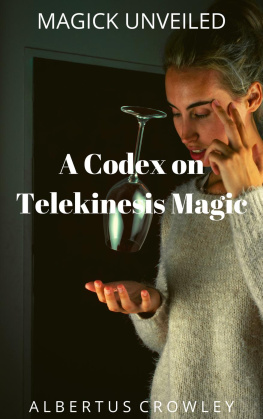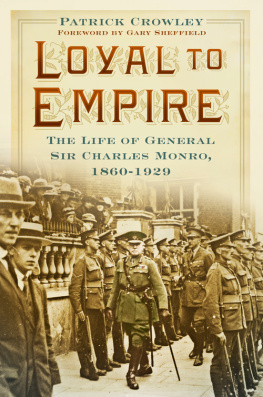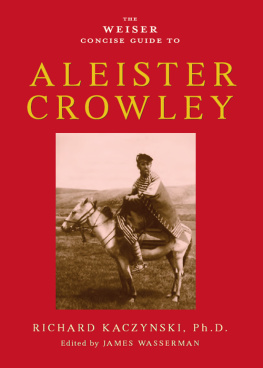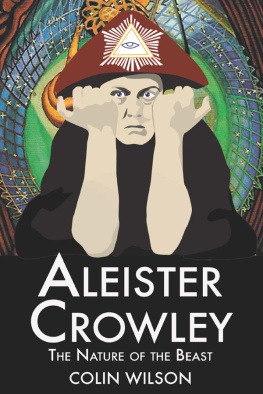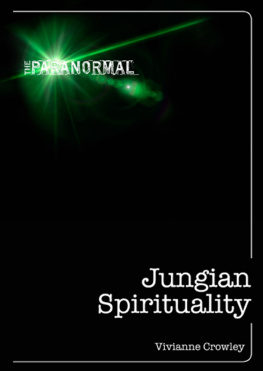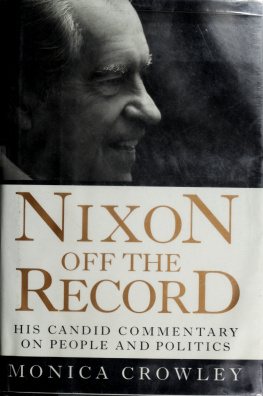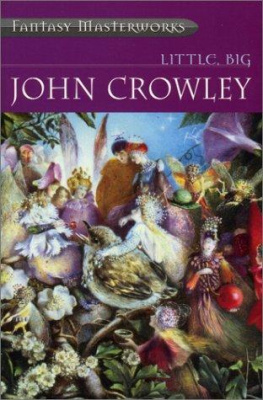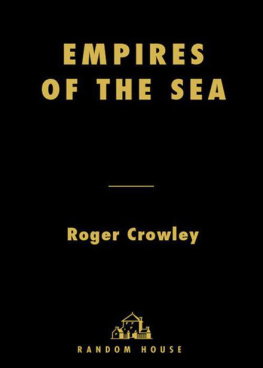Crowley J. Donald - 1997;2016;
Here you can read online Crowley J. Donald - 1997;2016; full text of the book (entire story) in english for free. Download pdf and epub, get meaning, cover and reviews about this ebook. City: London;New York, year: 1997;2016;1970, publisher: Routledge, genre: Detective and thriller. Description of the work, (preface) as well as reviews are available. Best literature library LitArk.com created for fans of good reading and offers a wide selection of genres:
Romance novel
Science fiction
Adventure
Detective
Science
History
Home and family
Prose
Art
Politics
Computer
Non-fiction
Religion
Business
Children
Humor
Choose a favorite category and find really read worthwhile books. Enjoy immersion in the world of imagination, feel the emotions of the characters or learn something new for yourself, make an fascinating discovery.
- Book:1997;2016;
- Author:
- Publisher:Routledge
- Genre:
- Year:1997;2016;1970
- City:London;New York
- Rating:3 / 5
- Favourites:Add to favourites
- Your mark:
- 60
- 1
- 2
- 3
- 4
- 5
1997;2016;: summary, description and annotation
We offer to read an annotation, description, summary or preface (depends on what the author of the book "1997;2016;" wrote himself). If you haven't found the necessary information about the book — write in the comments, we will try to find it.
1997;2016; — read online for free the complete book (whole text) full work
Below is the text of the book, divided by pages. System saving the place of the last page read, allows you to conveniently read the book "1997;2016;" online for free, without having to search again every time where you left off. Put a bookmark, and you can go to the page where you finished reading at any time.
Font size:
Interval:
Bookmark:

This book gathers together those materials that make up the primary record of Hawthornes literary reputation from 1828 to 1883. The documents collected here thus trace the reception of Hawthornes fiction, both in America and in England, from the publication of Fanshawe to that of the Riverside Edition of his Complete Works , which established the basic Hawthorne canon and has been, until the appearance of the Centenary Edition now being published, the standard scholarly text. The 142 selections give a representative account of the reaction to all of Hawthornes works and are, with a few exceptions, arranged chronologically.
Most of the items printed here are reviews and notices, not only because they are generally the most valuable critical statements, but also because they have been much less accessible than comments in memoirs, biographies, and other book-length publications. Besides the classical statements of Poe, Melville, and Henry James and the prominent appraisals of such writers as E. P. Whipple, George W. Curtis, Richard Holt Hutton, Leslie Stephen, and Anthony Trollope, the entries include many other reviews and letters which reflect the intensity as well as the range of the contemporary opinion of Hawthornes works. Hawthorne himself was, throughout his career, especially concerned about the place of the artist in American society, and those portions of his Prefaces in which he addresses himself to the question of his relation with his audience are therefore included here as an enlightening comment both on his own works and on the popular taste. Still other opinions from letters and private journals are mentioned in the headnotes and in the Introduction. Nevertheless, so full and numerous are the contemporary statementsthese documents amount to less than half the mass of criticism examinedthat it has been necessary to extract from many of the essays included here.
The attempt has been to present as fully and faithfully as possible for the years 1828 to 1883 the popular and critical reaction to Hawthorne as a literary artist, and to reconstruct the milieu in which Hawthorne shaped his art.
I am grateful to the University of Missouri Research Council for granting me a summer research fellowship for this project. The texts of Hawthornes prefaces to The Scarlet Letter, The House of the Seven Gables, The Blithedale Romance , and The Marble Faun; the text of the Postscript to The Marble Faun ; and the passages from The Custom-House are reprinted from the Centenary Edition of the Works of Nathaniel Hawthorne, edited by William Charvat, Roy Harvey Pearce, Claude M. Simpson, Matthew J. Bruccoli, and Fredson Bowers, a publication of the Ohio State University Centre for Textual Studies and the Ohio State University Press. Copyright 1963, 1965, 1968 by the Ohio State University Press. All rights reserved. Grateful acknowledgment is also due to the Houghton Mifflin Company for permission to quote from Hawthornes Prefaces in the 1883 Riverside Edition of his works and from George Parsons Lathrops A Study of Hawthorne (1876); the New York Public Library for permission to quote letters from the Duyckinck Collection and from the Henry W. and Albert A. Berg Collection; the Harvard College Library for permission to quote from the Hawthorne-Fields and the Hawthorne-Longfellow correspondence; Yale University Press for permission to quote from The Letters of Herman Melville , edited by Merrell R. Davis and William H. Gilman; Columbia University Press for permission to quote from Ralph L. Rusks edition of The Letters of Ralph Waldo Emerson; Harvard University Press for permission to quote from The Letters of Emily Dickinson , edited by Thomas H. Johnson and Theodora Ward, and Selected Mark Twain-Howells Letters , edited by Frederick Anderson, William M. Gibson, and Henry Nash Smith; Professor Norman Holmes Pearson for permission to quote from a Hawthorne letter in his private collection. The librarians of the University of Missouri, the University of Illinois, and Yale University were most kind in making available materials for this collection. I owe a special debt to Bertha Faust, whose Hawthorne s Contemporaneous Reputation (1939) has been a basic reference for research on this subject.
I would also like to thank the proprietors and editors of the following magazines and newspapers for permission to reprint reviews and notices from their files: Atlantic Monthly, Blackwoods Magazine , the Cornhill Magazine (John Murray, Ltd.), Harper s Magazine , the Nation (New York), the New Statesman (for notices from the Athenaeum) , the Spectator , and The Times .
J. DONALD CROWLEY
The reviews and other commentaries in this volume follow the original texts in all important respects. It has been necessary at times to delete digressive or repetitive passages, lengthy plot summaries, and extracts from Hawthornes works when these are quoted merely to illustrate the general style of the novel or tale in question. All these omissions are clearly indicated in the text. Typographical errors in the originals have been silently corrected, but a few variant spellings have been allowed to stand. The editors footnotes are numbered; footnotes that are part of the text are asterisked, daggered etc. The texts of the Prefaces to the five romances follow the Centenary Edition of the Works of Nathaniel Hawthorne now being published by the Ohio State University Press; the texts of all other Prefaces are taken from the Riverside Edition of the Complete Works , edited by George Parsons Lathrop in twelve volumes, Cambridge, Mass., 1883.
THE EARLY WRITINGS: LACK OF RECOGNITION
Nathaniel Hawthorne, wrote Poe in 1847, is the example, par excellence , in this country, of the privately-admired and publicly-unappreciated man of genius (No. 41). Poes assessment is a basically accurate one and points to perhaps the central paradox in Hawthornes contemporary reputation: although his fiction was from the very beginning reviewed favourably, even enthusiastically, neither the fiction nor the reviews captured the attention of the common reading public. If the lack of a wide popular audience was a general condition faced by almost every serious writer in nineteenth-century America, it is fitting nevertheless that Poe should have seen the problem as defining Hawthornes special plight. In 1851, shortly after the publication of The Scarlet Letter , Hawthorne, looking back on the reception of his first collection of tales, wrote in his Preface to Twice-Told Tales (No. 67) that the circulation of the two volumes was chiefly confined to New England; nor was it until long after this period, if it even yet be the case, that the Author could regard himself as addressing the American public, or, indeed, any public at all. He was merely writing to his known or unknown friends. Although Melville, Whitman, and Poe himself suffered something of the same kind of fate, it was Hawthorne who seemed to confront most fully the problem of an inadequate reading public and whose works were most shaped by that problem. The need to create an acceptably wide audience for himself was a matter of constant urgency throughout most of his career. Emily Dickinson could characterize her own poetry as my letter to the World/That never wrote to me and be at ease with the thought. Hawthorne, however, had to speak of his Twice-Told Tales somewhat desperately as his attempts, and very imperfectly successful ones, to open an intercourse with the world.
The American literary scene in the early nineteenth century was by no means inviting, especially to the serious, professional writer. Sydney Smith, one of the founders of the Edinburgh Review , could with justification ask, Who reads an American book? In 1828, the year Hawthorne published Fanshawe , his first book, James Fenimore Cooper complained in Notions of the Americans of the lack of an international copyright law and the economic consequences for American literature:
Font size:
Interval:
Bookmark:
Similar books «1997;2016;»
Look at similar books to 1997;2016;. We have selected literature similar in name and meaning in the hope of providing readers with more options to find new, interesting, not yet read works.
Discussion, reviews of the book 1997;2016; and just readers' own opinions. Leave your comments, write what you think about the work, its meaning or the main characters. Specify what exactly you liked and what you didn't like, and why you think so.


